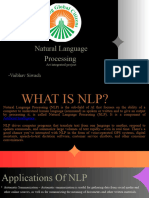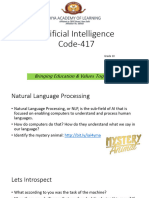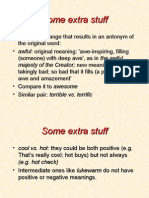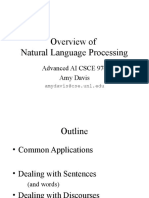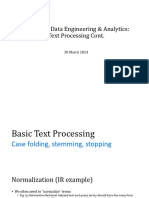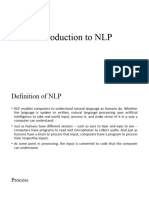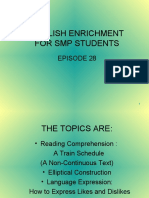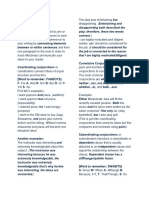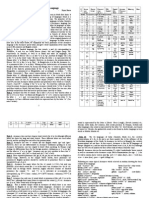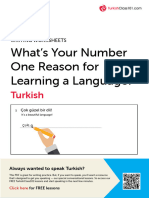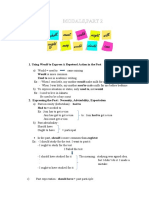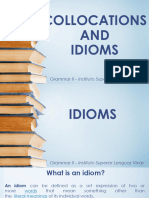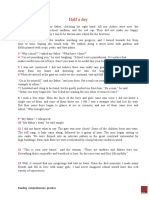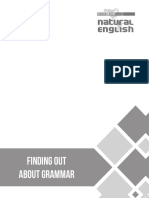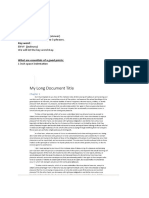0% found this document useful (0 votes)
13 views24 pagesNatural Language Processing Notes Class 10 AI
Natural Language Processing (NLP) is a sub-field of AI that enables computers to understand and process human language. Key applications include automatic summarization, sentiment analysis, text classification, and virtual assistants like Google Assistant and Siri. The document also outlines the project cycle for AI projects and details various NLP techniques such as tokenization, stemming, lemmatization, and the Bag of Words algorithm.
Uploaded by
pkt011979Copyright
© © All Rights Reserved
We take content rights seriously. If you suspect this is your content, claim it here.
Available Formats
Download as DOCX, PDF, TXT or read online on Scribd
0% found this document useful (0 votes)
13 views24 pagesNatural Language Processing Notes Class 10 AI
Natural Language Processing (NLP) is a sub-field of AI that enables computers to understand and process human language. Key applications include automatic summarization, sentiment analysis, text classification, and virtual assistants like Google Assistant and Siri. The document also outlines the project cycle for AI projects and details various NLP techniques such as tokenization, stemming, lemmatization, and the Bag of Words algorithm.
Uploaded by
pkt011979Copyright
© © All Rights Reserved
We take content rights seriously. If you suspect this is your content, claim it here.
Available Formats
Download as DOCX, PDF, TXT or read online on Scribd
/ 24

















